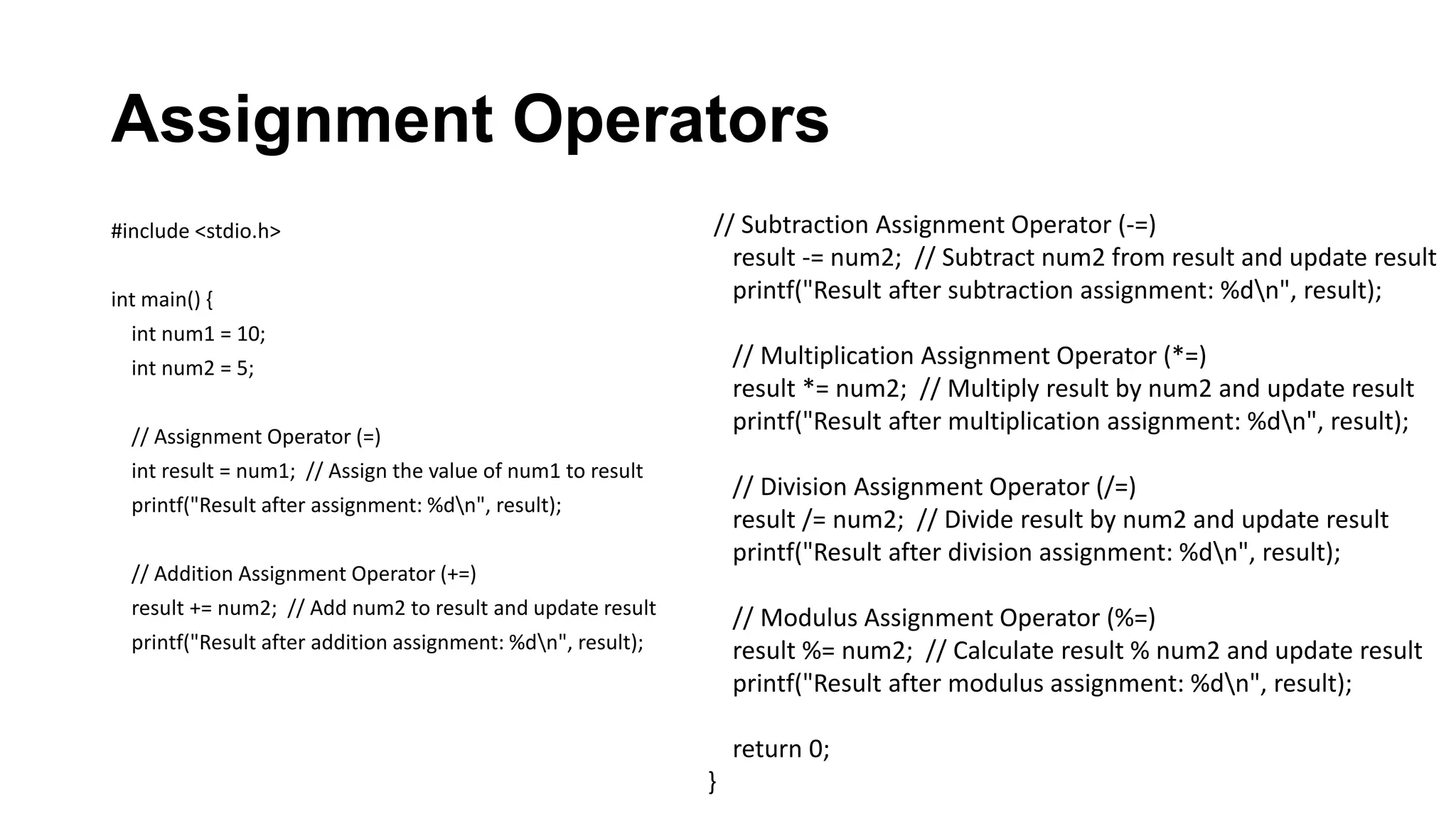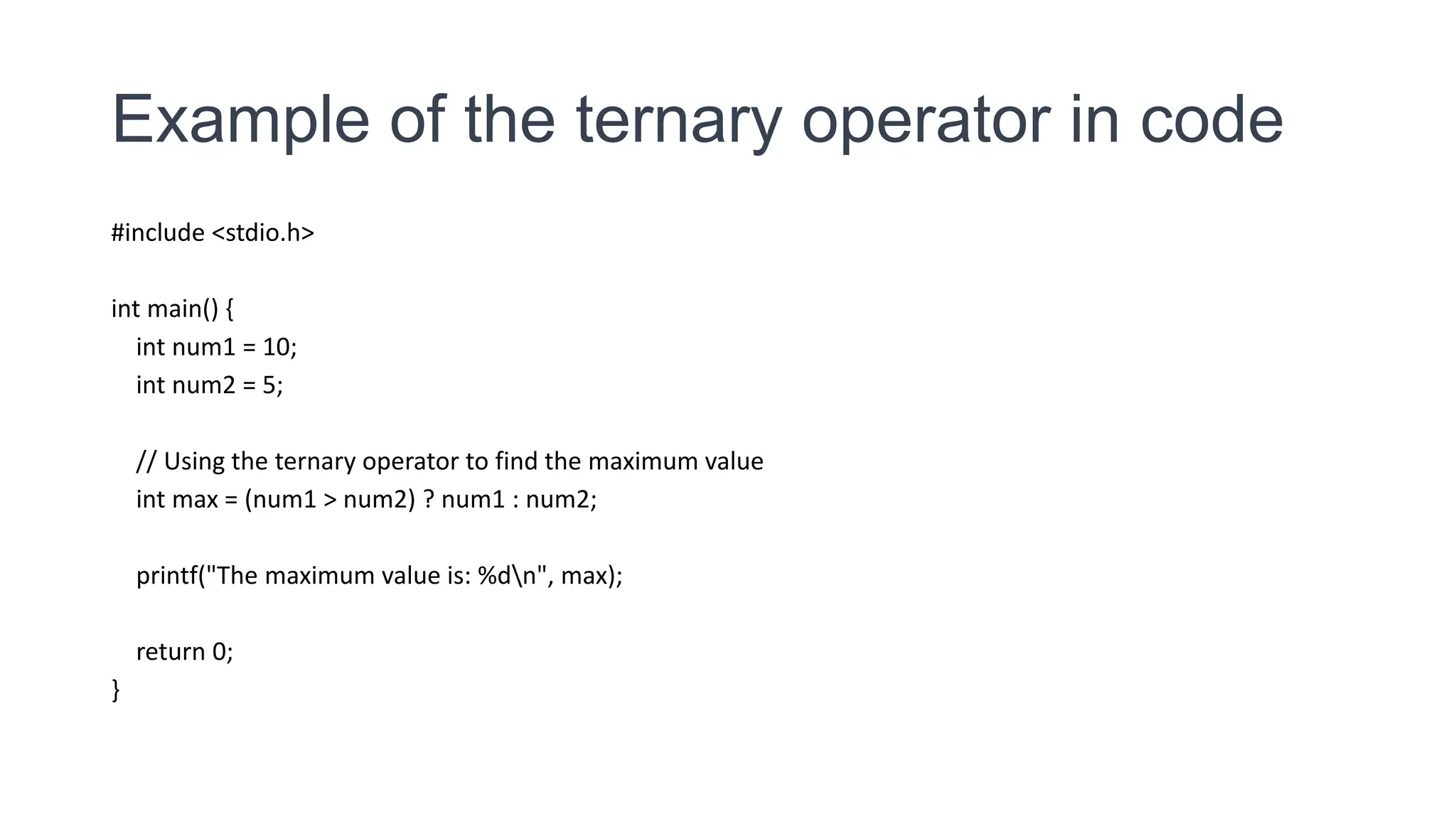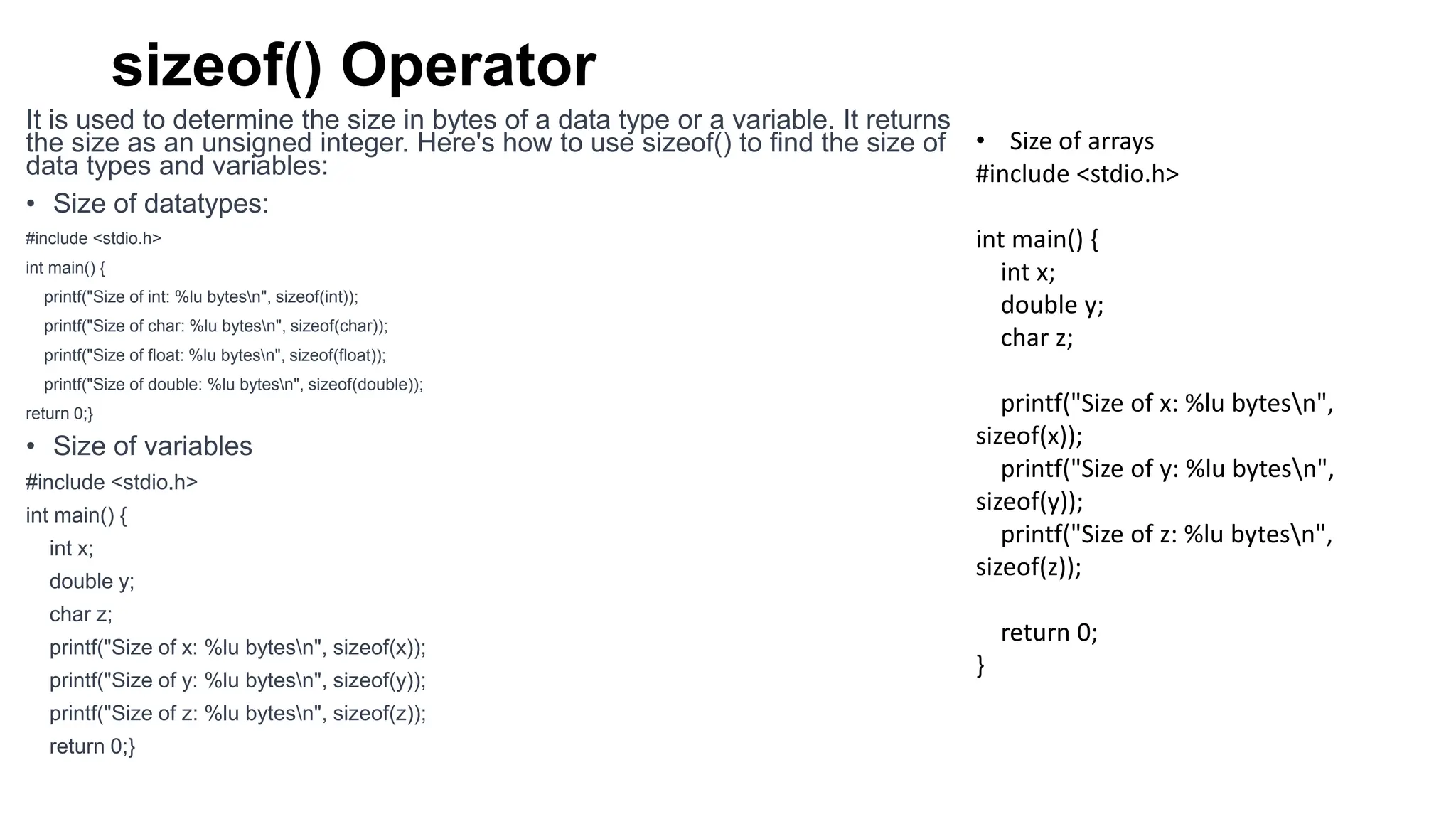Operators are symbols that perform operations on data in programming languages. They allow programmers to manipulate variables and values to solve problems efficiently. The main types of operators include arithmetic, comparison, logical, assignment, bitwise, ternary, and sizeof operators. Operators are essential for tasks like data manipulation, control flow, efficient coding, and expressing code concisely. They provide flexibility and improve code understandability.













![Operator Precedence
Precedence Operator Description
1 () Parentheses (grouping)
2 [] Array subscript
-> Member access (via pointer)
. Member access (via object)
++, -- Post-increment, Post-decrement
(type) Type casting
3 ++, -- Pre-increment, Pre-decrement
+, - Unary plus, Unary minus
!, ~ Logical NOT, Bitwise NOT
& Address-of (unary)
* Indirection (unary)
sizeof Size of a type or object
(type) Type casting (compound)
4 *, /, % Multiplication, Division, Modulus
5 +, - Addition, Subtraction
6 <<, >> Bitwise Left Shift, Bitwise Right Shift
7 <, <=, >, >=
Relational operators: Less, Less or
Equal, Greater, Greater or Equal
8 ==, != Relational operators: Equal, Not Equal
9 & Bitwise AND
10 ^ Bitwise XOR
11 | Bitwise OR
12 && Logical AND
Operators with
higher precedence
are evaluated before
operators with lower
precedence. For
example, in an
expression like a *
b + c, the
multiplication (*) is
evaluated before the
addition (+) due to
their respective
precedence levels.](https://image.slidesharecdn.com/operators1-231013150534-8d7af7b2/75/Operators1-pptx-14-2048.jpg)

